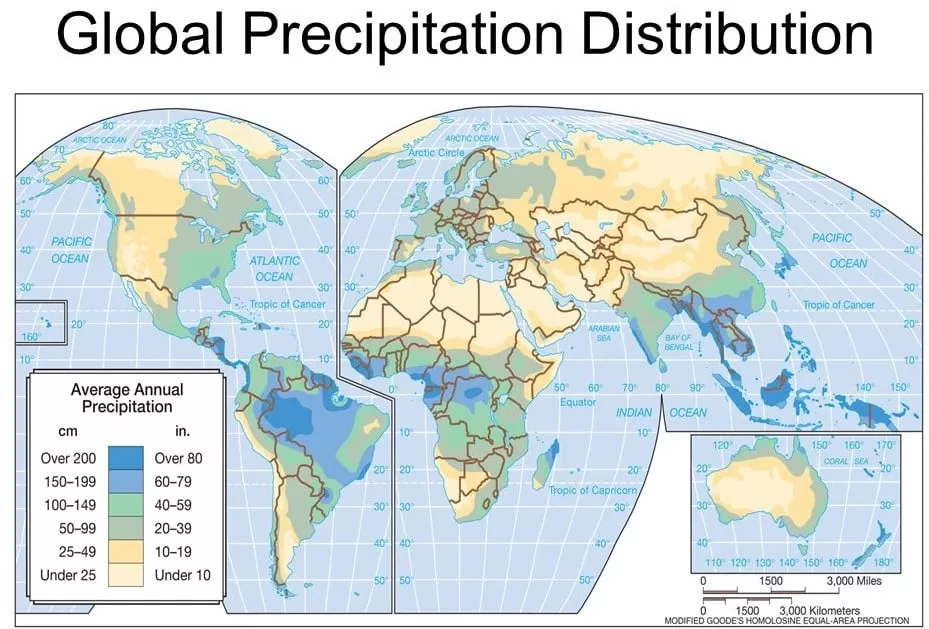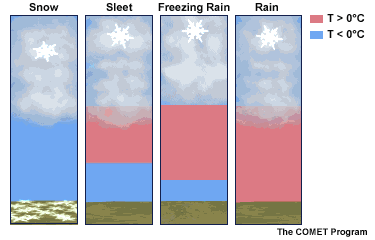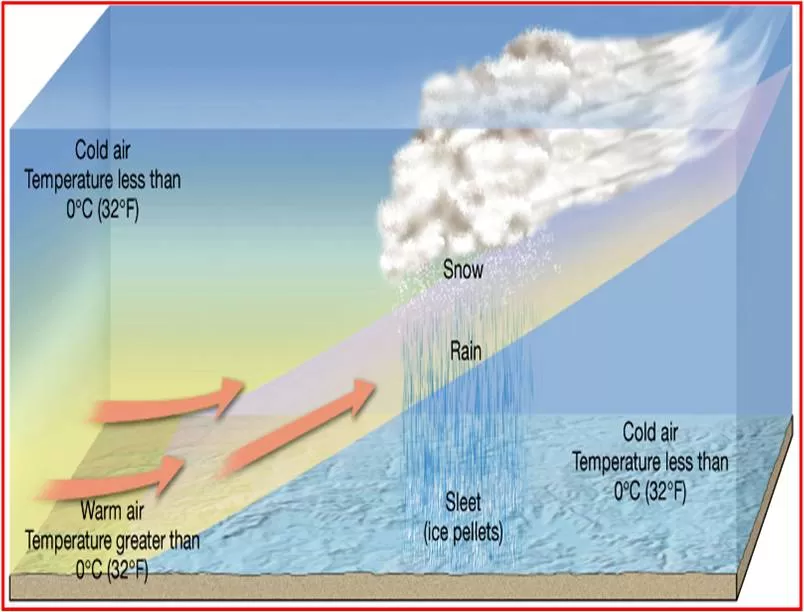Table of Contents
Introduction
We all are familiar with rain or precipitation but, many of us do not know what are the types of precipitation and rainfall, what is the difference between hail and snow or difference between drizzle and rain etc. So, in this article, I will cover all the topic related to the types of precipitation and rainfall and their formation.
What is Precipitation?
Generally, the precipitation in the form of water is called rainfall. Rain and snow are the most common forms of precipitation. The process of precipitation represents falling of condensed material in the form of rain, snow, hail or sleet. The process of precipitation and rainfall depends on the fulfilment of certain conditions.
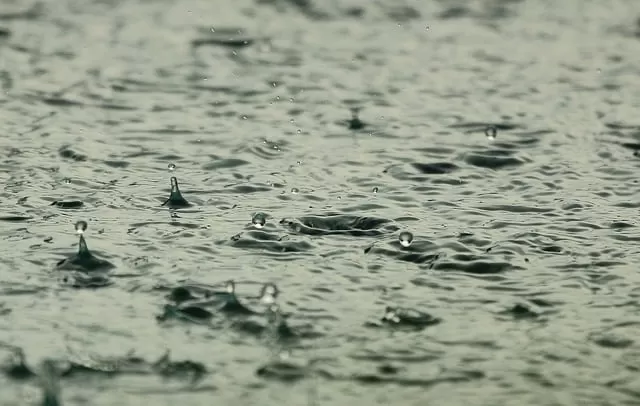
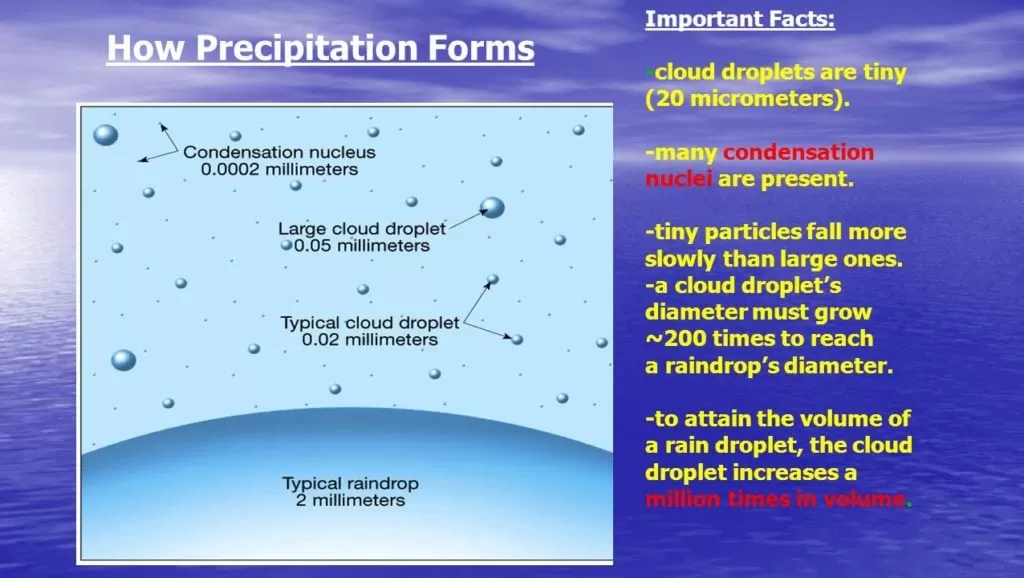
Theories associated with precipitation are as following
- Bergeron-Fiendeisen process.
- Collision-Coalescence process.
Bergeron-Fiendeisen process
- Based on ice crystal formation.
- Depends on the presence of water in the three states ie. water vapour, liquid cloud droplets, and ice crystal.
- Also known as the Bergeron process or ice crystal process.
Collision-Coalescence process
- Proposed by George Simpson and Mason.
- Based on the fact that precipitation requires the formation of large droplets (more than 20 micrometres).
- The droplets must fall on the surface.
- The requirement of hygroscopic particles for the development of such large droplet.

The favourable conditions required for collision and coalescence
- The rate of expansion of droplet depends on the size and distribution of cloud droplets.
- Clouds which have a great vertical thickness and abundant moisture have the best potential for precipitation.
- In the initial stage, the number of condensation nuclei should be limited.
- Variations in size of the nuclei also favour collision and coalescence.
- The breakup of droplets when they acquire the maximum size due to failure of surface tension of drops.
- Coalescence is rapid in case droplets which have opposite electric charges.
What are the Forms of precipitation?
Precipitation occurs in many forms, such as:
- Liquid precipitation.
- Freezing precipitation.
- Frozen precipitation.
Drizzle, rainfall and snowfall are the most common, and widespread forms of precipitation. The other forms of precipitation are freezing rain, sleet and hail.
The Following are the major forms of precipitation.
Rain
- Rain is the most common form of precipitation.
- Diameter range varies between 0.5 to 5 mm.
- In tropical, cumulus clouds rain is the result of collision and coalescence process.
- In temperate areas, nimbostratus clouds produce more rainfall.
- The vertical clouds (cumulonimbus) produce heavy rainfall with lightning and thunder.
Drizzle
- Drizzle represents light liquid precipitation in the form of uniform water droplets.
- Diameter less than 0.5mm.
- Generally, the drizzles are associated with stratus, nimbostratus and stratocumulus clouds.
- The most frequent form of precipitation over subtropical oceans.
Snow
- Represents precipitation in the solid form of water.
- Generally, the snow is powdery and feathery in appearance.
- Primarily do not join together to form a bigger crystal.
- The snow includes a great range of ice crystals.
- The shape, size and concentration reflect the process of formation.
- Generally, the snowfall takes place from ice-clouds.

Sleet
- Sleet composes rain and partially melted snow.
- The sleet represents small ice pellets as frozen rain or refrozen melted snow water.
- Sleet is predominantly a wintertime phenomenon, in middle and higher latitudes.
- The formation of sleet also occurs in the frontal precipitation.
Snow pallets
- It consists of small, white and opaque compact grains of ice.
- The diameter varies between 2-5 mm.
- Snow pallets are also known as Soft hail.
- The snow pallets are commonly associated with convective storms of winter and spring seasons.
Hail
- It represents precipitation in the form of hard and rounded pellets of ice.
- The diameter varies between 1-5 cm.
- The size of hail depends upon the content of ice and snow.
- Hailstones are common in violent summer thunderstorms.

Types of precipitation
The following are the types of precipitation
- Convectional Precipitation.
- Orographic Precipitation.
- Frontal or cyclonic Precipitation.
Convectional Precipitation-
- In this type of precipitation, the principal lifting force for the ascending warm and moist air is thermal convection.
- Due to excessive heating, water particles become volatile and lighter.
- The water particles take the gaseous form due to absorption of heat and masses of water vapour begins to rise.
- With altitude, temperature decreases and some condensation takes place. This results in the release of latent heat of condensation.
- The same mass of air is further heated and thrown up where it finally cools down and, cumulonimbus clouds are formed which cause precipitation.
- The sudden cooling result in lightning and thunder.
- The heavy downpour of short duration and phenomenon like cloud burst is also associated with such rainfall.
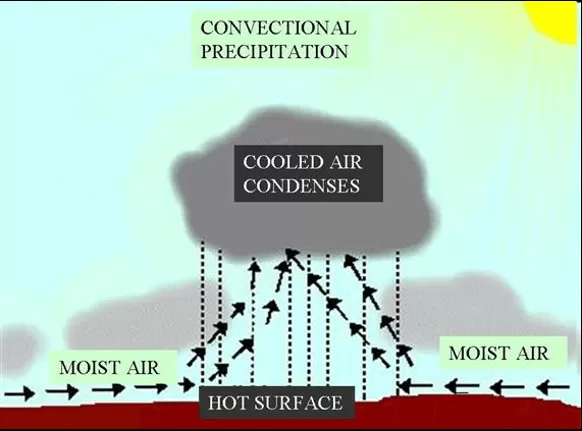
The two conditions necessary for convectional precipitation
- Intensive heating of the surface.
- Abundant supply of moisture in the air.
Orographic Precipitation
- Orographic precipitation occurs when an upland or physical barrier forces the flow of air to rise and cool adiabatically.
- Depends upon the level of instability.
- Orographic precipitation predominantly occurs on the windward sides.
- The leeward sides generally remain rain shadow areas.
- The descending air gets adiabatically heated due to compression.
- Rainshadow region, where condensation and precipitation remain negligible.
- The best example of orographic rainfall is represented by the Western Ghats of India.
- The most significant feature of orographic precipitation is the inversion of rainfall.
- The latitude, distance from the sea, moisture content, season, and type of slop decide the line of maximum rainfall.
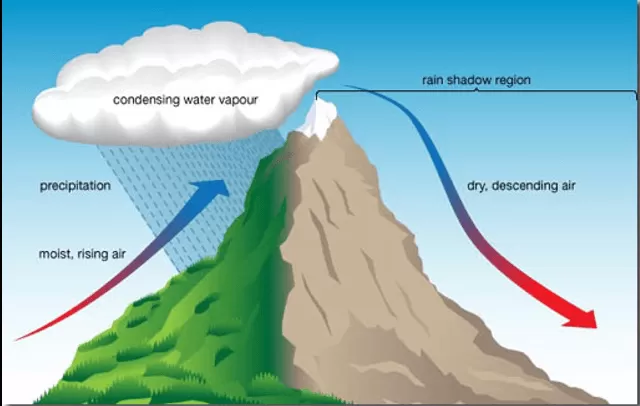
Frontal or cyclonic precipitation
- This type of precipitation is associated with fronts, temperate cyclones and tropical cyclones.
- The frontal precipitation occurs when two air masses interact with each other.
- The warm air being lighter moves up, which causes condensation and cloud formation.
- Lifting mechanism at fronts produces instability, resulting in condensation and precipitation.
- Along the warm front, mostly Nimbostratus clouds are formed which causes long duration and widespread rainfall.
- Along the cold front, the cumulonimbus clouds are formed which causes thundershowers of short duration.
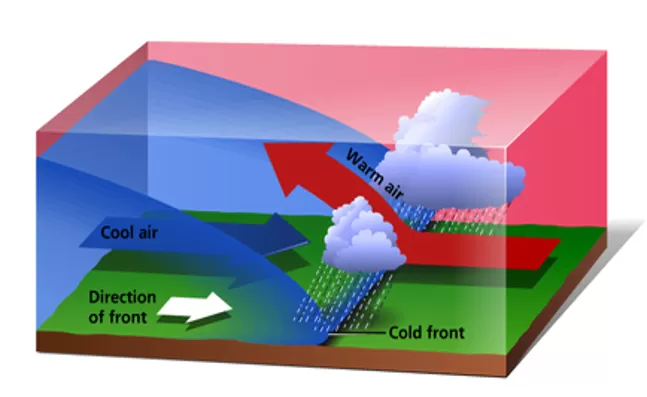
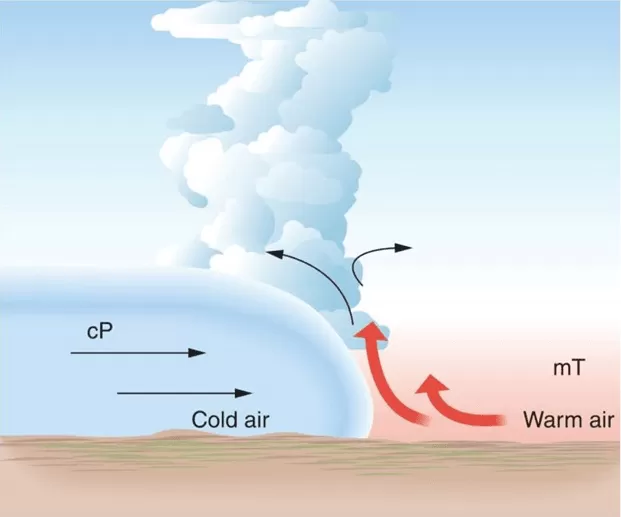
Global distribution of precipitation and rainfall
- Equatorial zone.
- Trade wind zone.
- Subtropical zone.
- Mediterranean zone.
- Mid-latitude zone.
- Polar zone.
Equatorial zone
- Extend between 10⁰ latitudes on either side of the equator.
- Characterized by warm and moist air masses.
- This region records the highest mean annual rainfall of about 2000 mm.
- Most of the rains are received through conventional rainfall accompanied by thunder and lightning in the afternoon.
Trade wind zone
- Extend between 10⁰–20⁰ latitudes in both the hemispheres.
- Characterized by steady trade winds.
- These winds yield heavy rainfall in the eastern parts of the continents (maritime or monsoonal climate).
- Moderate rainfall in the middle (savanna climate) and are almost devoid of moisture in the western part of the continent.
- The most rainfall in this belt occurs in summers.
Subtropical zone
- Extend between 20⁰- 30⁰ latitudes in both the hemispheres.
- The mean annual rainfall is very less.
- Most of the world’s deserts are found in this belt.
- Mean annual rainfall is 700mm, but in deserts it is 250mm.
Mediterranean zone
- Extend between 40⁰-50⁰ latitudes is both the hemispheres.
- Here rainfall occurs through westerlies during winter.
- Summers are dry.
- Mean annual rainfall in 1000 mm.
Mid latitude zone
- Extend between 40⁰-50⁰ latitudes is both the hemispheres.
- Here the rainfall occurs through westerlies and temperate cyclone.
- Although rainfall is received all the year round yet more in winters.
- Mean annual rainfall is about 1250 mm.
- The western part of the continent receives more rainfall.
- The southern hemisphere records more rainfall than northern hemisphere because of dominance of oceans.
Polar zone
- Precipitation decreases pole-ward of 60⁰ latitude in both the hemispheres.
- Mean annual precipitation becomes only 250mm beyond 75⁰ latitude.
- Most of the precipitation occurs in the form of snowfall.
Global Distribution of precipitation.
